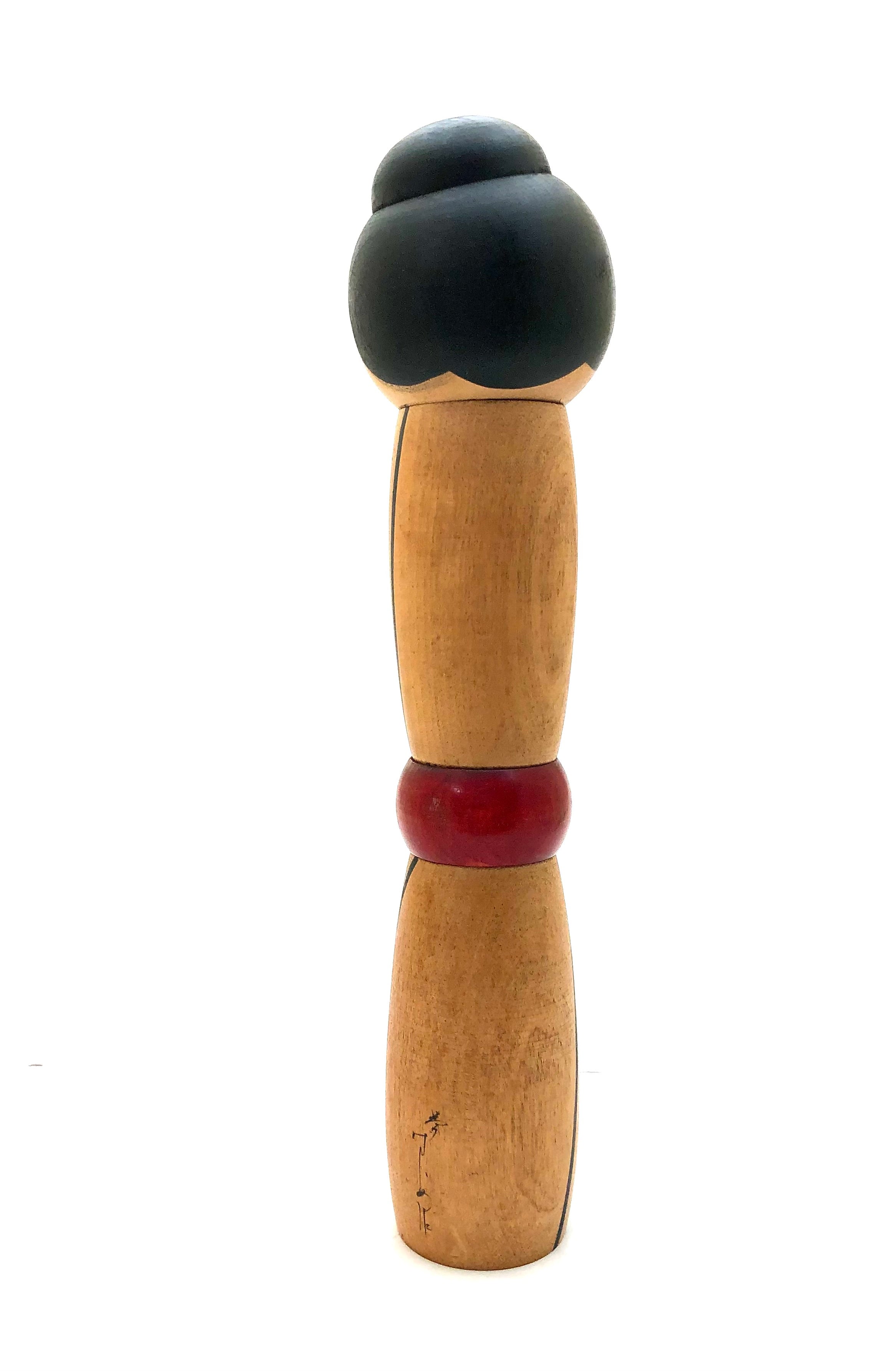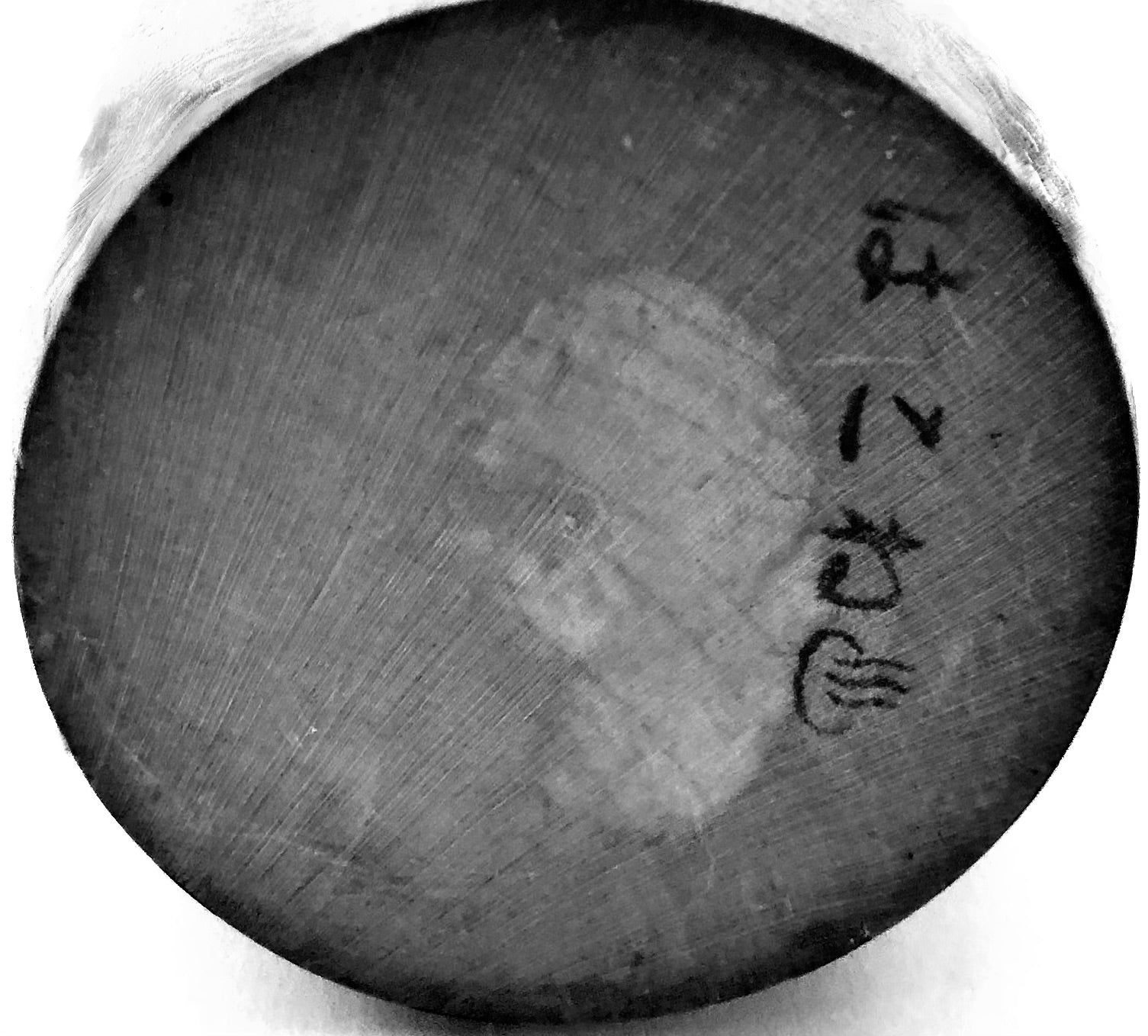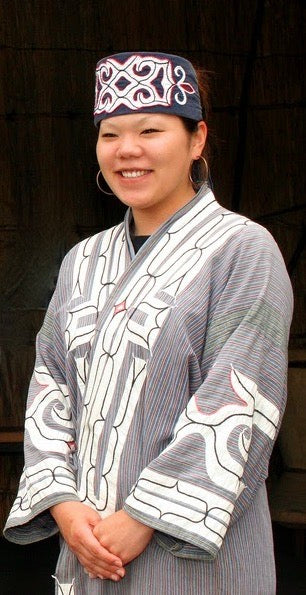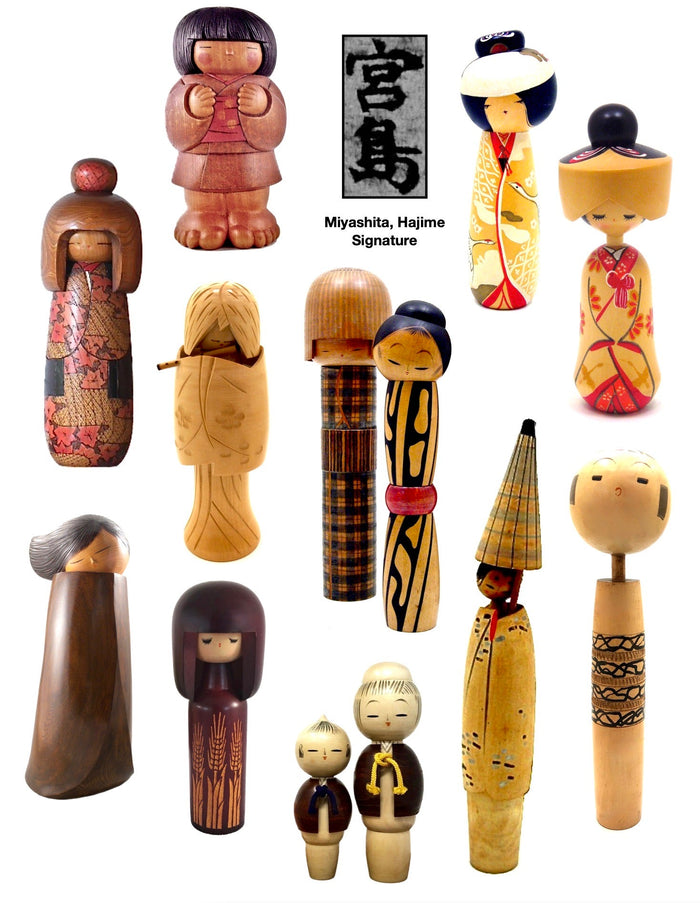



Antique RARE Japanese Ainu Inspired Kokeshi entitled: Yume | Dream by Miyashita, Hajime
Dimensions: 11-0”h
Offered is an EXCEPTIONAL, RARE Ainu-inspired Kokeshi. The rarest element on the Kokeshi being offered is the historic nature of the simulated Festival Garment that focus attention on the representation of the stylistic and expressive graphic design. Textiles with this graphic form typically incorporate embroidery elements into the fabric and are meant to ward off evil spirits. (When cotton became available through trade, the Ainu began to decorate clothes with cotton cloth strips or thread as shown here. These traditional clothes are no longer worn in contemporary daily life. However, it is becoming more common to see traditional Ainu clothing at ceremonies and during song or dance presentations at events).
Beginning with her hair treatment, the head is topped with the ‘mage’ showing the traditional wrapping of hair, which is formed into a pleasing design with a slight indication of bangs and side hair fringes. Her head and face incorporate narrow downturned eyes with delicate eyelashes, a thin nose, and tiny red lips. The painted elements of the face are executed in black and gray sumi-e expressing humility. The doll is made from one piece of Dogwood, (Hanamizuki) leaving a simple lathe-turned form focusing on the outer garment and sash thus differentiating the parts of the figures. The Sash is in high relief and enameled in red. Research from the All Gunma Kindai Kokeshi Association indicates that this piece along with a few other creations by Kokeshi artists was purchased in 1969 by Crown Prince Naruhito and Princess Masako and specifically represented Miyashita-san’s culturally sensitive dolls. The piece is signed by the artist in script on the back with additional identification on the bottom of the doll.
NOTE: For additional information on this artist go to our Browse and Learn section and look up Artisan | Woodworker: Miyashita, Hajime | 1940-2006 rtrd.
Condition: Excellent and retaining the original craft/workmanship. The figure is finished in melted white wax which was applied and polished. The wax prevents the wood from cracking or getting soiled and effectively draws out the oiliness of the wood. This museum-quality figure is exceptionally rare, and only a few such figures are exhibited at the Hokkaido Museum in Japan and are sought after by collectors of this form of folk craft.

Artisan
Woodworker: Miyashita, Hajime
1940-R2006
Biographical History:
Born in Yonezawa City, Iwate, Miyashita-san studied traditional kokeshi making under Yamagata-Sakunami Master artist Kobayashi Kichitaro. He began his Sosaku career in 1959, winning many awards, including the Prime Minister’s Award in 1965, and 1977 of which several were purchased in 1969 by Crown Prince Naruhito and Princess Masako and said to be his most culturally sensitive dolls. His studio was located in Maebashi City of Gunma Prefecture, but after it was consumed by fire in 2006, Miyashita-san retired.
Collector's note – descriptive qualities, standard characteristics & ornamentation styles:
Miyashita-san was known for his seasonal themes, such as the period of transition from spring to summer known as ‘tsuyu’, which means ‘rainy season. Traditional umbrellas (Wagasa), are atypical, and rarely used in Kokeshi creations, except for Miyashita’s designs. He also depicts Kabuki dancers known as Kagamijishi, which is a shortened name of the Kabuki dance called the “shunkyo Kagamijishi”. Depicting the Lion dance characters, (Mai, in this instance), was an additional theme for this artist, for it portrayed the spirit of the lion, which is a contrast between the elegant feminity and the dynamic masculine power of the lion's spirit. Miyashita-san depicts brides in traditional wedding attire. One is dressed in a Uchikake, (Brocade), a Kimono with traditional motifs, (chrysanthemums and cranes). Her head is adorned with a traditional cover called a 'Tsuno-kakushi', which refers to the “hiding the horns of jealousy”, and symbolizes a prayer for the marital accord. And finally, he breaks from the traditional Kokeshi form with a later doll showing oversized arms and feet.
Additionally, Miyashita-san created a series of Yukata and festival Kokeshi whose title comes from the works ‘yu’, (bath) and ‘Katabira’, (under clothing), and draped loosely over the body for comfort. Today Yukata and Festval Garents are also worn in bon-Odori dance festivals and competitions throughout Japan. The majority of the dolls are made of dogwood, and display different graphic patterns, with either unique obi or sash, which is also simulated in wood. all of Miyashit-san’s hairstyles illustrate the diversity of individual tastes of the period.
Explore & Learn More about Woodworker: Miyashita, Hajime